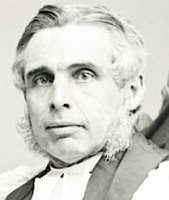Context: Christine de Pizan and 'The Book of the City of Ladies'
‘The Woman Reader’ by Barbara Jack traces the history of
women’s literacy, both reading and writing, from the earliest records to the
present day. It’s a truly gripping story which encompasses all of gender
history; because the way that women have been able to express themselves in
reading and writing has had profound echoes on everything they were able to
accomplish. Jack presents countless examples of women who re-wrote the rules on
what women were allowed to say in public – amazing women who stood up against
people who tried to define them in one particular way. She also shows us men
who wrote about women, and how important these portrayals were to how women
were perceived. But there was one individual who really caught my interest when
I read about her. Amongst the whole of women’s history, Jack could spend only a
couple of pages on this woman, but I wanted to learn much more about her.
Christine saw what was written about women, and felt that
she had to do something about it. She wrote several books, which are classics or early feminist writing and very important for that reason. Many of these riled
the misogynist authors of her day, and one of the most well-known of these was The Book of the City of Ladies. With the
help of the spirits of Reason, Rectitude and Justice personified within the
narrative, Christine clearly and passionately discusses the falsely-based
prejudice that women have to contend with, and sets up a utopia where women’s
virtues are appreciated and rewarded, and women themselves are protected from
male harm. On the subject of rape, Christine is vocal:
‘It therefore angers and upsets me when men claim that women
want to be raped and that, even though a woman may verbally rebuff a man, she
won’t in fact mind it if he does force himself upon her. I can scarcely believe
that it could give women any pleasure to be treated in such a vile way.’
No-one could really disagree with her. But while Christine’s
writing and feminism were radical for her time, it can’t really be compared
with modern feminism. While reading The
Book of the City of Ladies, I was hugely impressed with Christine’s courage
and intelligence, and at first I wanted to buy copies for all my friends,
shouting: ‘Look look look! This woman completely understands. She lived 600
years ago and she stood up for our rights to be treated as equals!!!’ Except,
she kind of didn’t. Yes, she railed against chauvinism and misogyny. Yes, she
paved the way towards feminism. But in no modern sense does her work stand up
for female equality as we would know it today. Obviously any idea of equal
working rights, marriage rights, voting rights would have been unimaginable.
But the way that Christine defends women is by accepting their traditional
place as nurturers, home-makers, virgins and saints. There is no room for
sexual assertiveness, as there is now. She is not outraged that men cannot
accept women’s sexuality, keeping them trapped in a passive role. She is
outraged because she feels that women’s sexuality is something made up by men.
Women are to be defended because they are virtuous, not because they should be
allowed to be sexual. In fact, it is because they are passive that they are
‘better’ than men think they are. You can imagine how an argument like this
would play out today. Now to be a feminist, you must reject traditionally
‘feminine’ values. Christine de Pizan, however, extols them.
On the other hand, I quite like Christine’s world view up to
a point. Women need to be free to express themselves however they wish, in
their dress, in what they say, in how they say it. But I don’t think it’s
necessary to ‘reclaim’ derogatory terms like ‘slut’ or ‘whore’ in order to do so.
Women’s sexuality is not something to be feared, but celebrated. But I wonder
whether by having multiple sexual partners and non-committal relationships we
are in danger of creating a world where our bodies are not respected – by men
or women.
FURTHER
READING:
The
Treasure of the City of Ladies by
Christine de Pizan
Dit de
la Rose by Christine de Pizan
L'Epistre
au Dieu d'amours by Christine de Pizan
Ditié
de Jehanne d'Arc by Christine de Pizan
'Unladylike
Polemics: Christine de Pizan's Strategies of Attack and Defense' by Christine
Moneera Laennec, published in Tulsa
Studies in Women's Literature (Spring, 1993)
'With Ink
and Mortar: Christine de Pizan's 'Cité de Dames' by Sandra L. Hindman, published
in Feminist Studies (Autumn,
1984)









